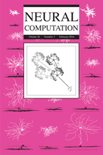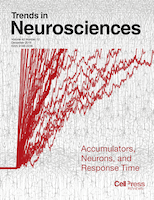
LEARNING & MEMORY
Scope & Guideline
Pioneering Research in Cognitive Neuroscience
Introduction
Aims and Scopes
- Behavioral Mechanisms of Learning and Memory:
Investigates how different learning paradigms influence memory formation and retrieval, highlighting the role of experience and environment in shaping cognitive abilities. - Neurobiological Foundations:
Explores the neural circuits and molecular mechanisms underlying learning and memory, with a strong emphasis on synaptic plasticity, neurotransmitter systems, and brain region interactions. - Comparative Studies Across Species:
Utilizes a diverse range of model organisms, including insects, rodents, and humans, to draw parallels and contrasts in learning and memory processes, fostering a broader understanding of cognitive functions. - Impact of Emotional and Contextual Factors:
Examines how emotions, stress, and contextual variables affect memory encoding, consolidation, and retrieval, revealing the complexities of memory in real-world scenarios. - Technological Innovations in Memory Research:
Incorporates advanced methodologies such as optogenetics, chemogenetics, and neuroimaging to elucidate the dynamics of memory processes and develop new experimental paradigms.
Trending and Emerging
- Neural Circuitry and Memory Dynamics:
A growing emphasis on understanding the specific neural circuits involved in learning and memory processes has emerged, with studies utilizing modern techniques like optogenetics to manipulate and observe these networks in real-time. - Sleep and Memory Consolidation:
Research focusing on the role of sleep in memory consolidation has gained traction, highlighting how different sleep stages contribute to the strengthening of memories and the mechanisms involved. - Sex Differences in Learning and Memory:
An increasing number of studies are exploring how sex differences influence learning and memory processes, addressing gaps in understanding how biological and hormonal factors contribute to cognitive function. - Emotional Influences on Memory:
The impact of emotional states on memory processes, particularly how emotions can enhance or impair memory retention and retrieval, has become a prominent area of investigation, reflecting broader psychological interests. - Contextual and Environmental Factors:
Research is increasingly focusing on how contextual cues and environmental changes affect memory performance, emphasizing the importance of situational factors in cognitive processes.
Declining or Waning
- Basic Associative Learning Mechanisms:
While foundational studies on classical and operant conditioning remain important, there appears to be a shift towards more complex models that integrate emotional, contextual, and neural dimensions, leading to fewer publications focusing solely on basic associative learning. - Pharmacological Interventions in Memory Enhancement:
Research centered on the use of pharmacological agents to enhance memory has diminished, possibly as the field moves towards understanding the underlying neural circuits rather than simply testing drug effects. - Age-Related Memory Decline:
Although age-related cognitive decline is still relevant, the specific focus on this theme has waned in favor of broader explorations of developmental and contextual influences on memory across the lifespan. - Traditional Memory Assessment Techniques:
As the field embraces more sophisticated and nuanced approaches to studying memory, traditional assessment methods are being used less frequently, leading to a decline in publications centered around these conventional techniques.
Similar Journals

JOURNAL OF EXPERIMENTAL PSYCHOLOGY-GENERAL
Exploring the Depths of Cognitive UnderstandingJOURNAL OF EXPERIMENTAL PSYCHOLOGY-GENERAL, published by the American Psychological Association, is a leading journal in the field of experimental and cognitive psychology. With an ISSN of 0096-3445 and a robust impact factor that reflects its significant contribution to research, this journal serves as a premier outlet for empirical studies that advance our understanding of psychological processes across development and cognition. Covering a wide array of topics from developmental neuroscience to general psychology, it is categorized in the Q1 quartile across multiple fields, making it a vital resource for researchers, professionals, and students alike. The journal has maintained a consistent publication record since its inception in 1975, continuously freeing insights that shape the future of psychology and related disciplines. With rigorous peer review and high standards of scholarly excellence, JOURNAL OF EXPERIMENTAL PSYCHOLOGY-GENERAL remains an essential platform for disseminating innovative psychological research.

COGNITIVE AFFECTIVE & BEHAVIORAL NEUROSCIENCE
Illuminating Connections: Understanding the Neuroscience of Mind and ActionCOGNITIVE AFFECTIVE & BEHAVIORAL NEUROSCIENCE (ISSN: 1530-7026, E-ISSN: 1531-135X) is an esteemed journal published by SPRINGER that aims to advance the understanding of the interplay between cognitive processes, affective states, and behavioral responses in the field of neuroscience. Established in 2001, the journal provides a rigorous platform for disseminating high-quality research, with a significant focus on both Behavioral Neuroscience and Cognitive Neuroscience. Classified in Q1 and Q2 quartiles for 2023, it ranks highly within its categories, holding positions of #37 out of 88 and #46 out of 115 respectively in the Scopus listings. Although not an open-access publication, readers can access a wealth of valuable insights and innovative findings that enrich the scientific community's understanding of brain function and behavior. The journal's emphasis on interdisciplinary research contributes to its esteemed reputation, making it a vital resource for students, researchers, and professionals striving to explore the complex nature of the human mind and behavior.

Frontiers in Synaptic Neuroscience
Unlocking the mysteries of synaptic function for a brighter neuroscience future.Frontiers in Synaptic Neuroscience, published by FRONTIERS MEDIA SA, is a leading open-access journal that has been at the forefront of advancing knowledge in the fields of neuroscience and cellular biology since its inception in 2010. With an ISSN and E-ISSN of 1663-3563, this journal aims to disseminate high-quality research focused on the structural and functional mechanisms of synapses and their role in neural communication. The journal's reputation is underscored by its impressive standing in the academic community, evidenced by its 2023 category quartiles: Q2 in Cell Biology and Q1 in Cellular and Molecular Neuroscience. It holds a noteworthy position within Scopus ranks, being placed 35th out of 97 in its primary category, showcasing its relevance to both established and emerging researchers in the field. Operating from its office in Lausanne, Switzerland, this journal fosters collaboration and knowledge exchange while supporting the principles of open access, allowing wide dissemination and accessibility of groundbreaking research. With a converged publication timeline extending from 2009 to 2024, Frontiers in Synaptic Neuroscience continues to be an invaluable resource for professionals and students alike, eager to explore the complexities of synaptic function and its implications for neural networks.

Cognitive Neurodynamics
Illuminating the Dynamics of Thought and Behavior.Cognitive Neurodynamics is a leading journal in the field of cognitive neuroscience, published by Springer in the Netherlands. With an ISSN of 1871-4080 and an E-ISSN of 1871-4099, this journal has established itself as a prominent platform for innovative research from its inception in 2007, continuing to enrich the academic landscape through 2024. Recognized for its significant contributions, Cognitive Neurodynamics holds a Q2 quartile ranking in cognitive neuroscience and impressively ranks #27 out of 115 in the Scopus database, placing it in the 76th percentile among its peers. While the journal is not open access, it offers a wealth of studies focusing on the intricate dynamics of cognitive processes and neurobiological mechanisms, making it essential reading for researchers, professionals, and students alike. Its objective is to bridge the gap between theoretical insights and practical applications, fostering a deeper understanding of cognition through multidisciplinary approaches. Explore the latest advancements in cognitive dynamics and contribute to the evolving dialogue within this fascinating field.

Brain Sciences
Advancing Knowledge in Brain Function and DisordersBrain Sciences is a distinguished open-access journal published by MDPI, focusing on a wide array of topics within the field of neuroscience. Established in 2011, this journal has positioned itself as an essential resource for researchers and professionals eager to explore innovative advancements in understanding brain function, neurological disorders, and cognitive processes. With an impactful reach, the journal has achieved a Q2 ranking in the miscellaneous Neuroscience category for 2023 and is recognized in the Scopus database, holding a rank of #59 out of 113 in general neuroscience—a testament to its growing influence and credibility. Based in Basel, Switzerland, Brain Sciences offers rigorous, peer-reviewed research and contributes significantly to the global discourse in neuroscience. Its open-access model ensures that cutting-edge findings are readily available to the academic community, fostering collaboration and knowledge sharing. As it continues to bridge the gap between research and practice, Brain Sciences is poised to be an invaluable asset for students, researchers, and professionals striving to push the boundaries of neuroscience.

Cognitive Research-Principles and Implications
Transforming Understanding of Cognitive Mechanisms.Cognitive Research: Principles and Implications, published by SPRINGER, is a premier open-access journal dedicated to the dynamic field of cognitive neuroscience and experimental psychology. Since its inception in 2016, this journal has rapidly established itself as a leading platform for disseminating innovative research, achieving impressive rankings of Q1 in both Cognitive Neuroscience and Experimental and Cognitive Psychology in 2023. With a Scopus ranking of #16 out of 165 in Experimental and Cognitive Psychology and #28 out of 115 in Cognitive Neuroscience, it serves as a vital resource for researchers and practitioners eager to explore the intricacies of cognitive processes. Operating from its base in the United Kingdom, the journal offers open access to its articles, ensuring that groundbreaking research is widely available and can influence both academic inquiry and real-world applications. As the field continues to evolve, Cognitive Research: Principles and Implications remains an essential reference point for advancing understanding in cognitive science, making it an indispensable tool for students, professionals, and academics alike.

Cognitive Systems Research
Redefining Boundaries in Cognitive ResearchCognitive Systems Research, published by ELSEVIER, is a prestigious journal dedicated to advancing the field of cognitive systems, a dynamic intersection of Artificial Intelligence, Cognitive Neuroscience, and Experimental Psychology. With an impressive impact factor and ranked in the Q2 category across multiple disciplines, this journal is recognized for its contribution to fundamental and applied research, making it an essential resource for researchers, professionals, and students alike. The journal's scope encompasses innovative studies that push the boundaries of how cognitive processes are understood and simulated within computational frameworks. With a commitment to fostering open science, articles are made readily accessible, promoting the rapid dissemination of knowledge. As the field evolves from 1999 to 2024, Cognitive Systems Research stands as a pivotal forum for the exploration and development of cognitive theories and systems, welcoming high-quality submissions that encourage interdisciplinary collaboration.

NEURAL COMPUTATION
Exploring the dynamic interplay between neurons and algorithms.NEURAL COMPUTATION, published by MIT PRESS, is a leading academic journal that focuses on the interdisciplinary field of neural computing, combining insights from artificial intelligence, cognitive neuroscience, and computational modeling. With an impressive impact factor and consistently high rankings—being positioned in the Q1 category of Arts and Humanities and Q2 in Cognitive Neuroscience—this journal serves as a vital resource for researchers and professionals interested in understanding the complex interactions between neural processes and computational systems. Founded in 1995 and continuing through its converged years until 2024, NEURAL COMPUTATION publishes cutting-edge articles that advance theoretical knowledge and practical applications in both fields. While it does not provide open access, the journal ensures rigorous peer-review processes, making it an essential platform for disseminating significant research findings. With its commitment to fostering innovation and understanding at the intersection of neuroscience and computation, NEURAL COMPUTATION stands out as a cornerstone for academic exploration and discovery.

Neuropsychologia
Exploring the Mind: Bridging Psychology and NeuroscienceNeuropsychologia, published by PERGAMON-ELSEVIER SCIENCE LTD, is a premier journal that delves into the intersections of psychology and neuroscience, specifically focusing on behavioral and cognitive processes. Since its inception in 1963, this esteemed journal has been a vital platform for researchers, professionals, and students, showcasing innovative studies and advancements in the fields of Behavioral Neuroscience, Cognitive Neuroscience, and Experimental Psychology. With a commendable impact factor, placing it in the Q2 category across multiple disciplines, Neuropsychologia is recognized for its contribution to the scientific community, ranking among the top journals in both Experimental and Cognitive Psychology and Neuroscience. The journal's commitment to excellence is evident in its rigorous peer-review process and its mission to disseminate cutting-edge research, making it an invaluable resource for those seeking to expand their knowledge and insights in neuropsychology. For further reading, the journal is accessible in both print and digital formats, ensuring that researchers can easily engage with the latest findings and theoretical advancements in this dynamic field.

TRENDS IN NEUROSCIENCES
Exploring the Frontiers of Brain ResearchTRENDS IN NEUROSCIENCES, published by CELL PRESS, is a leading journal in the field of neuroscience, offering cutting-edge insights and important developments in the rapidly evolving landscape of brain research. With an impressive Impact Factor and ranking in the top quartile (Q1) of the category for Neuroscience (miscellaneous), it is positioned as a vital resource for researchers and professionals seeking to stay abreast of the latest discoveries and trends from 1978 to the present. Specifically ranked #3 out of 113 in General Neuroscience by Scopus, this journal promotes the interdisciplinary exchange of ideas and knowledge, making it an essential platform for students and experienced scholars alike. Although it is not an Open Access journal, its value lies in its rigorous peer-review process and commitment to maintaining the highest standards of academic integrity. By continuing to explore the complexities of neural processes and behavior, TRENDS IN NEUROSCIENCES plays a crucial role in shaping the future of neuroscience research and education.